Distillation is one of the oldest methods of separating substances. This technology was developed further into the more efficient steam distillation, which provides more secure, quicker and more reproducible results for the same range of samples. The capacity of substances to be separated out using steam is utilised in many analytical areas to determine the quality or quantity of these substances.
In food analysis, the content of volatile basic nitrogen compounds is used to determine the freshness of fish and fish products. The SO2 content in food and beverages must be monitored for compliance with statutory maximum limits. In foods such as dried fruits, wine and shrimps, sulphur dioxide is used as a presverative and must be determined accordingly. In wine laboratories, the alcohol content in alcoholic drinks and the SO2 and sulphite content are analysed as part of the labelling requirements. The content of volatile acids is an important parameter for the taste of the wine. In beer production, the concentration of vicinal diketones is used to assess the fermentation process and the taste of beer. In environmental analysis, ammonium content, the phenol index and the cyanide content (concentration of hydrogen cyanide) are determined in soils and water. With aminoplastic adhesives, the formaldehyde content determines the effectiveness of the glues. For wood materials, the formaldehyde content is used to classify the materials in accordance with the statutory emission limits.
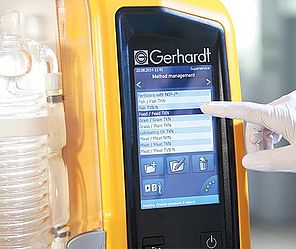
Steam distillation with titration
Steam distillation with subsequent titration provides a quantitative result in the quickest, most direct way. The collected distillate is counter-titrated immediately after distillation by adding the titration solution and the result is calculated.
The method is used to determine TVB-N volatile basic nitrogen compounds in fish and fish products in accordance with BVL L10.00-3, to analyse ammonium nitrogen in soils and water, and to determine the SO2 content in food. Analysing volatile acids in wine requires the sample to be heated to the boiling point before titration in order to remove any CO2. The sample is then titrated with NaOH. Steam distillation and titration with NaOH are also used to determine the formaldehyde content in adhesives and wood materials.
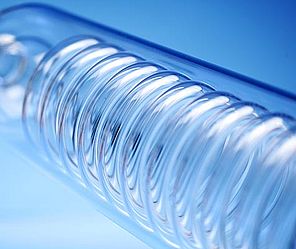
Steam distillation to prepare samples for subsequent quantitative determination using other methods
The substance that is volatile in steam is separated out of the sample matrix using steam distillation and then, depending on the sample matrix and the analyte, it is then determined quantitatively either photometrically, by measuring the density or using other methods. To determine the phenol index in soils and water, for example, German standard method DIN 38409 is applied to photometrically analyse the expelled phenols and other compounds capable of oxidative bonding. Photometry is also used in quantitative determination of cyanide in water, soils and sludges in accordance with DIN 38405. Vicinal diketones in beer are also determined photometrically after expulsion, in accordance with MEBAK. The alcohol content of beverages, by contrast, is determined by measuring the density of the distillate. The OIV specifications apply here to wine.

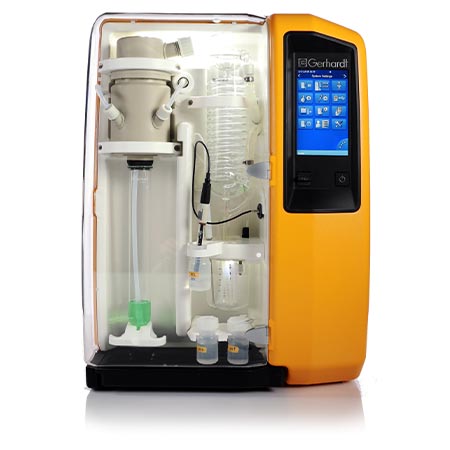
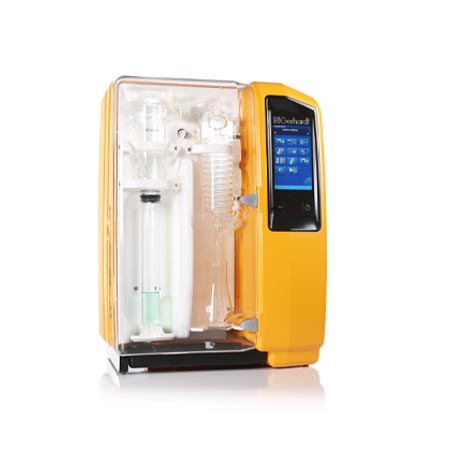
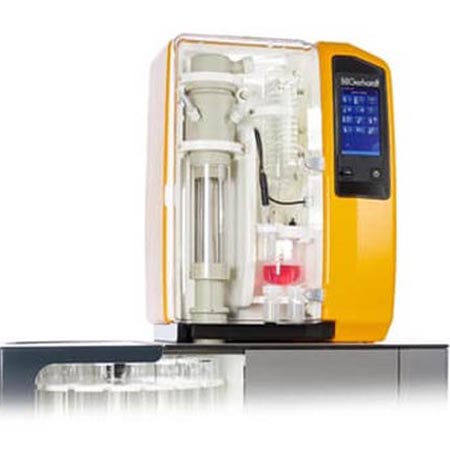
![[Translate to English:] [Translate to English:]](/fileadmin/_processed_/e/1/csm_cg_publications_800x800_alcohol_fd69932c14.jpg)
![[Translate to English:] [Translate to English:]](/fileadmin/_processed_/b/8/csm_Application_notes_Bilder_fuer_UEbersicht_TVB-N_63ca712935.jpg)
![[Translate to English:] [Translate to English:]](/fileadmin/_processed_/e/5/csm_Application-notes-Bilder-fuer-UEbersicht_SO2_183c443024.jpg)